Introduction
A garden is a sanctuary, a testament to the beauty of nature, and a source of immense pride. However, maintaining its pristine condition requires dedication, effort, and the right tools. Among these tools, the small leaf rake stands out as an essential item for any gardener. This lightweight, fan-shaped tool is instrumental in keeping your garden clean and healthy, allowing air, water, and nutrients to penetrate the turf. This article delves into the importance of a well-kept garden, the role of a small leaf rake, the different types available, and how to choose and use one effectively.
The Importance of a Well-Kept Garden
A well-maintained garden is not just about aesthetics; it's a testament to the dedication and effort put into nurturing nature's beauty. It's a sanctuary where you can find peace, tranquility, and a sense of accomplishment. One of the key tools that help maintain this beauty is the small leaf rake. It plays a crucial role in keeping your garden clean and healthy, ensuring that it remains a source of joy and pride.
Understanding the Role of a Small Leaf Rake
A small leaf rake is a lightweight tool, shaped like a fan with flat, springy tines radiating outward. It's designed to glide over grass without causing damage. There are different materials available, including steel, polypropylene, and bamboo. The primary function of a leaf rake is to rake leaves and dead grass, especially after winter. It's used with a sweeping motion, similar to using a broom, to expose the area to air so nutrients and water can penetrate the turf.
Types of Small Leaf Rakes
A small leaf rake, often made from plastic, is designed for raking up fallen leaves. It has a long fan-shaped set of tines and is less flexible than lawn rakes, making it better suited for light materials. Another variant is the shrub rake, which has fewer, shorter tines, allowing it to reach smaller spaces. It's ideal for raking out debris from alongside fences or between and underneath shrubs. Both types are essential tools for maintaining a tidy garden, especially during the fall season.
Metal Rakes
A metal small leaf rake typically has more spring, making it an excellent choice for larger garden areas. Its design allows for efficient cleaning around flowerbeds, shrubs, and bushes without disturbing the essential thatch in a lawn. The resilience of metal rakes also contributes to their durability, providing a long-lasting tool for your garden maintenance needs.
Plastic Rakes
Plastic rakes are typically lighter and less expensive than their metal and wooden counterparts. They are comfortable for taller users and cover a large area with their wide head. Some models are ideal for raking small leaves like pine needles due to their tightly packed tines. However, plastic rakes are usually less sturdy than metal and wood rakes.
Bamboo Rakes
Bamboo rakes, once a staple in garden maintenance, are cherished for their lightweight and gentle touch on garden beds. However, finding a durable bamboo rake that doesn't lose teeth or handle within a season has become a challenge. The ideal bamboo rake would have a padded sleeve for grip, rather than a plain wood rod. Modern bamboo rakes often have teeth that are too long and curved, and the metal strap holding the tines together is frequently inadequate. Despite their appeal, bamboo rakes seem to self-destruct quickly, with the metal devices or ties that hold the bamboo blades often getting caught and pulling away.
Choosing the Right Small Leaf Rake for Your Garden
Choosing the right small leaf rake depends on your yard's landscape and the type of debris you'll be raking. For complex debris like sticks or pine needles, rakes with wider-spaced tines are recommended. For flat lawns, rigid plastic rakes work well, while flexible metal rakes are better for uneven terrain. The height of your grass also matters, with plastic rakes being gentler on exposed ground. Lastly, consider the handle material for comfort during long periods of raking. Fiberglass and metal handles are smoother, lighter, and often come with grips.
Size and Weight Considerations
The small leaf rake available on Alibaba is a 73-inch long garden leaf rake, making it a suitable size for most gardeners. It has an adjustable handle, allowing for customization based on the user's height and comfort. The rake head is 8.5 inches wide, providing a decent coverage area for raking leaves and other garden debris. It's equipped with 11 metal tines, which are 0.27 inches wide, ensuring durability and efficiency. The rake is also easy to carry and store, making it a convenient tool for any gardener.
Durability and Material
When choosing a small leaf rake, the durability and material are crucial considerations. Rake handles are typically made of metal, wood, plastic, or fiberglass. Hardwood handles can last for years if properly maintained, but they're heavier than other handles and can rot or warp if not properly maintained. Metal handles are also durable as long as they have a rust-resistant coating. Plastic and fiberglass handles are the most lightweight options, but fiberglass can crack if left in the sun and plastic can bend under pressure. Most tines are made of metal or plastic. Metal tines are more durable, but they’re heavier and tend to make gardening tasks more strenuous.
Price and Brand Reputation
The small leaf rake available on Alibaba is a testament to the platform's commitment to providing high-quality gardening tools. Its durability surpasses that of plastic tines and wooden handles, making it a cost-effective choice for gardeners. Moreover, its easy assembly and disassembly make it a convenient tool for outdoor activities, further enhancing its value for money.
How to Use a Small Leaf Rake Effectively
Raking leaves up from grass lawns is crucial for maintaining a well-kept garden all year round. When using a small leaf rake, choose a windless day to prevent leaves from flying away. Some gardeners recommend first mowing over leaves to chop them into smaller pieces, making them easier to rake. Ensure the rake feels comfortable in your hands and matches your height to prevent constant bending. If you have a small garden with lots of shrubs and plants, a rake with a small head is ideal. Turn the work of raking leaves into a satisfying outdoor activity.
Proper Raking Techniques
Using a small leaf rake effectively involves a few key techniques. Firstly, it's important to wait until most leaves have fallen before starting the task. When raking, it's beneficial to use a grid pattern, dividing your lawn into sections and raking each one row by row. Also, consider the direction of the wind, raking in the same direction can make the task easier. Lastly, remember to maintain a good posture while raking to avoid fatigue and possible injury. These techniques can make the process more efficient and less strenuous.
Maintenance and Storage of Your Rake
Proper maintenance and storage of your small leaf rake can significantly extend its lifespan. It's crucial to clean and dry your rake before storing it. The storage location should allow for good air circulation and be moisture-free to prevent rusting. Organizing your tools efficiently not only saves space but also helps you keep track of what you have, avoiding unnecessary purchases. Remember, the way you store your tools makes a significant difference in their durability and effectiveness.
Conclusion
In conclusion, a small leaf rake is an indispensable tool for maintaining a well-kept garden. Its role extends beyond aesthetics, contributing to the health of your garden by allowing essential nutrients and water to reach the turf. The choice of rake depends on your garden's landscape, the type of debris, and your comfort. Whether it's metal, plastic, or bamboo, each type has its unique advantages. Using the rake effectively involves proper techniques and maintenance, turning the task of raking leaves into a satisfying outdoor activity. With the right small leaf rake, your garden can remain a source of joy, tranquility, and pride.


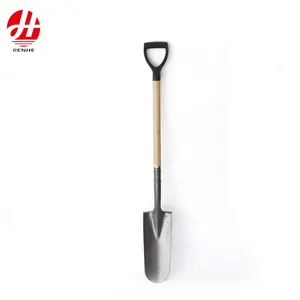



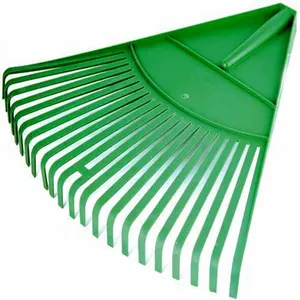
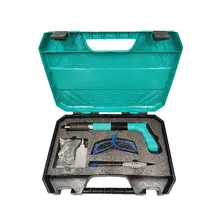




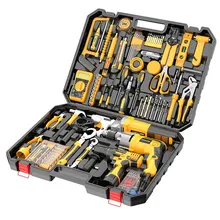


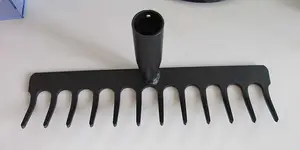
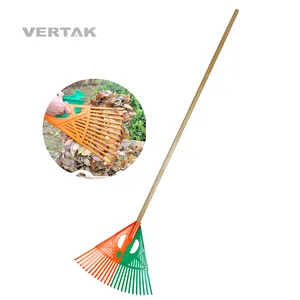

























 浙公网安备 33010002000092号
浙公网安备 33010002000092号 浙B2-20120091-4
浙B2-20120091-4